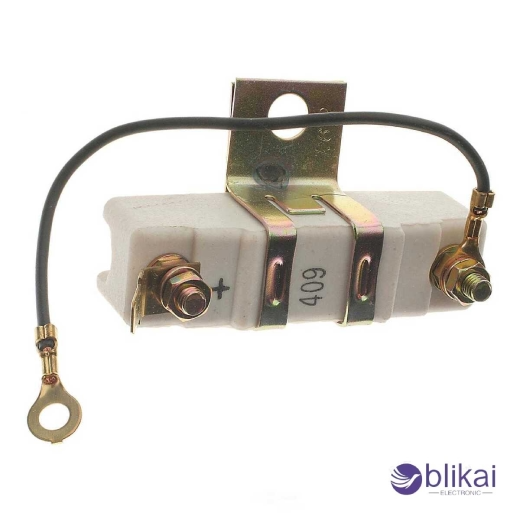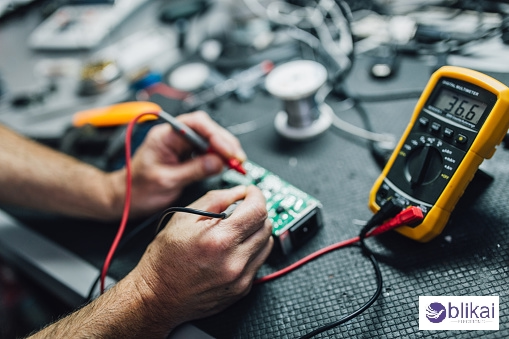Causes of Ballast Resistor Failure
Have you experienced sudden car stalling or failure to start up? The cause could lie within sight: Your ballast resistor.

Understanding Ballast Resistors
Function of ballast resistors in vehicles
Ballast resistors play an integral part in maintaining an optimal voltage supply to a vehicle's ignition system. These small but essential components help regulate current flow from the ignition coil and ensure optimal performance and longevity of its performance. By reducing voltage during regular operations, ballast resistors prevent too much current from damaging sensitive components like the ignition coil itself.
How ballast resistors impact ignition systems
Ballast resistors play an integral part in ignition systems. At engine startup, when higher voltage levels are required for optimal current flow to the ignition coil, ballast resistors are bypassed to allow maximum current to pass freely to it. Once running, though, their role changes drastically: once underway the resistor reduces voltage to protect from overheating and premature wear on its system. This dual mode operation ensures efficient starting as well as smooth running of engines.
Signs of a failing ballast resistor
When your ballast resistor begins to fail, several telltale symptoms may become evident. These include difficulty starting the engine in cold weather conditions, inconsistent engine performance and frequent stalling; in some instances drivers may notice decreased fuel efficiency or an increase in engine misfires. Left unattended, failing ballast resistors can lead to more severe ignition system issues that leave drivers stranded; regular maintenance and prompt attention paid to these symptoms could help protect against more extensive damage to their ignition systems and help prevent more extensive damages being done to their ignition systems.
Electrical Issues Leading to Failure
Voltage fluctuations and their effects
Voltage fluctuations can wreak havoc on ballast resistors, leading to their early failure and contributing to unexpected electrical stress on resistors. Voltage spikes may overwhelm its capacity causing it to overheat excessively or melt or burn out completely; conversely voltage drops may limit current flow compromising performance and potentially damaging connected components.
Short circuits damaging the resistor
Short circuits pose a severe threat to ballast resistors. When a short occurs, it creates a path of least resistance, bypassing the ballast resistor and allowing an excessive amount of current to flow. This sudden surge can cause the resistor to overheat rapidly, leading to thermal damage or complete failure. Sometimes due to its immense heat output during short circuits the resistor might even catch fire and pose serious safety risk.
Overloading the electrical system
Overloading the electrical system is another common cause of ballast resistor failure. This typically occurs when additional electrical components are added to the vehicle without proper consideration of the existing system's capacity. As the electrical load increases beyond the resistor's designed limits, it struggles to regulate the current effectively. This sustained overload can cause the resistor to operate at higher temperatures than intended, accelerating wear and ultimately leading to failure. Regular maintenance and careful consideration of electrical modifications are crucial in preventing such overload-related issues.
Environmental Factors Causing Resistor Damage
Extreme temperature effects
High temperatures can significantly impact ballast resistors, causing them to expand and potentially crack. Conversely, extreme cold can render them brittle, leading to fractures under sudden fluctuations. Over time these thermal stresses weaken its internal structure, diminishing effectiveness and lifespan over time.
Moisture and corrosion
Moisture poses an ongoing threat to ballast resistors. Water infiltration can lead to short circuits, accelerate corrosion of metal components and compromise their insulation properties. In coastal regions, salt air further compounds this problem by creating an electrical conductive surface on top of resistors which undermines their insulation properties and compromises their insulation capabilities.
Vibration and physical stress
Constant vibration from engine operation can gradually loosen connections and cause microfractures in the resistor. This is particularly problematic in older vehicles or those driven on rough terrain. Over time, these small damages accumulate, leading to complete failure of the ballast resistor.
Dust and debris accumulation
Over time, dust and debris may settle onto resistors, acting as an insulating layer and blocking heat dissipation. This trapped heat causes higher than intended operating temperatures for the resistor, speeding wear-and-tear wear rates and potentially leading to premature failure or even short circuiting resulting in immediate resistor failure.
Manufacturing Defects and Quality Issues
A. Substandard materials in resistor construction
The use of substandard materials in ballast resistor construction is a significant contributor to premature failure. Manufacturers may opt for cheaper, lower-quality materials to reduce production costs, compromising the resistor's integrity. These inferior materials often lack the necessary heat resistance and durability required for optimal performance. For instance, low-grade ceramic cores may crack under thermal stress, while poor-quality wire windings can corrode or break easily. Substandard insulation materials may also degrade quickly, leading to short circuits or electrical leakage.
B. Poor design leading to premature failure
Poor ballast resistor design is another key contributor to premature failure, such as improper heat dissipation mechanisms or inefficient component layout. Overheating may occur as a result of inadequate heat dissipation mechanisms or uneven current distribution; uneven current distribution can accelerate wear-and-tear wear on specific parts of the resistor faster than others; vibrational disturbance and environmental factors also play a part. Eventually this all leads to decreased lifespan for your ballast resistor!
C. Inconsistent quality control in production
Subpar quality control during the manufacturing process can result in an excessively large percentage of defective ballast resistors. Faulty units may pass inspection without inspection, leading to early failures on vehicles. Variations in production techniques like inconsistent winding tension or improper sealing could create weak points within a resistor and lax quality control could overlook issues like contamination during assembly or packaging that compromise its performance over time.

Improper Installation and Maintenance
A. Incorrect wiring connections
Improper wiring connections can be one of the primary causes of ballast resistor failure. When installing or replacing one, it is vitally important to follow all manufacturer's specifications closely; incorrect connections could result in excessive current flow, overheating and premature failure if left unchecked - always double-check that each wire is securely connected with its designated terminal before proceeding with installation or replacement.
B. Neglecting regular inspections
Regular inspections are an integral component of maintaining the health of your ballast resistor, and neglecting this step may result in undiagnosed issues that could become worse over time. When inspecting, look out for physical damage such as discoloration or burn marks as well as loose connections or frayed wires which could present electrical risks.
C. Using incompatible replacement parts
When searching for replacement ballast resistors, it may be tempting to opt for cheaper generic alternatives; however, using incompatible replacements could cause major complications. When replacing an original equipment ballast resistor with incompatible resistors that have different resistance values or power ratings could potentially compromise the electrical system and lead to irreparable damage in your vehicle's electrical system.
D. Over Tightening during installation
While it is necessary to make sure the ballast resistor is securely mounted, overtightening during its installation could result in physical damage to both ceramic body and internal components of the resistor. Use the recommended torque specifications and avoid applying unnecessary pressure. A properly installed resistor should be snug but not overly tight.
Conclusion
Ballast resistor failure can stem from any number of causes, from electrical to environmental and manufacturing issues. Understanding these sources is vital for vehicle owners and mechanics to prevent unexpected breakdowns while optimizing ignition system performance.
Regular inspection and maintenance of your vehicle's electrical components, including its ballast resistor, can greatly decrease its risk of failure. If you experience starting issues or notice inconsistency in engine performance, having your ballast resistor inspected by a qualified mechanic might be wise if there's anything amiss with its performance or starting. Being proactive about potential issues early will extend its life while potentially saving money later by avoiding costly repairs down the line.
Related Articles
Ballast Resistors: Operation, Applications, and Optimization
Carbon Film vs Metal Film Resistor
Does a Resistor Reduce Voltage
10k Resistor Color Code: Everything You Need to Know
How Does a Resistor Work [Fully Explained]
Wirewound Resistor: An In-Depth Overview
What is a Load Resistor? [Everything Explained]
What is a Fusible Resistor? [Everything You Need to Know]
Is a Fuse a Resistor? [Everything Explained]
Inductor vs Resistor: What’s the Differences?
How to Charge Capacitor Without Resistor?
Does a Resistor Reduce Voltage
Carbon Film vs Metal Film Resistor










